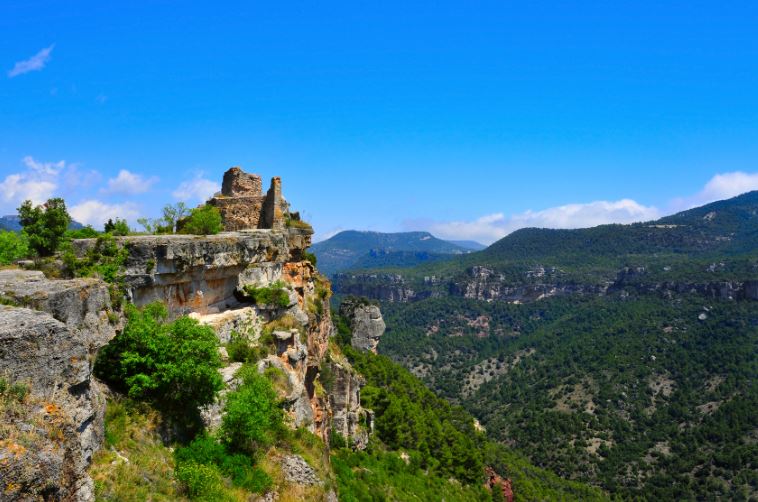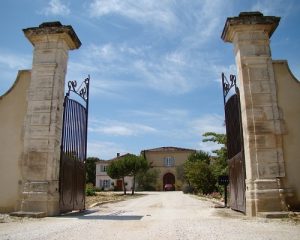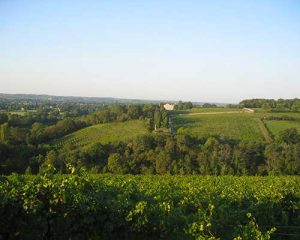
Spain has the largest area under vine in Europe (1 million hectares in 2017) and somehow, Spanish wines still fly under the radar. While Spain is the third largest wine producer in the world, after France and Italy, the harsh climate drastically reduces vine yields.
With 138 official wine designations (as of 2020), vines are planted on mountains, rolling plains and near coastlines such as in Priorat, or in river valleys like Ribera Del Duero. Spain is, without a doubt, a real powerhouse you need to know more about. Spain has been producing wine since the time of the Romans at around 1000 BCE, but the production of fine wine is a recent phenomenon, with the country experiencing several economic and political crises during the Franco regime. Today, we unveil all the secrets you need to know about the Spanish appellation system, the major wine-producing regions and the iconic names on the Iberian Peninsula.
Spanish wine appellation pyramid
- At the bottom of the Spanish wine quality control pyramid, we find the VdM (Vino de Mesa), the equivalent of the Vin de France level.
- Next up in ascending order are the VT (Vino de la Tierra), these wines are roughly equivalent to PGIs (protected geographical indication).
- Then, we have the DOs (Denominacion de Origen), the equivalent of PDOs (Protected Denomination of Origin).
- The DOCa (Denominacion de Origen Calificada) corresponds to the Italian DOCGs or the French grands crus. For the moment, only Priorat and Rioja have wines classified at DOCa level (it was introduced with the idea of applying it purely to the very top producers, but it applies to nearly the entire appellation nowadays).
Spain has also created the VC category (Vino de Calidad Con Indicacion Geografica) for exceptional wines produced outside a DO.
Additionally, a specific note is generally added to labels depending on how long the wine was aged:
- Crianza indicates the wine was aged for at least two years (including at least one year in barrels),
- Reserva indicates the wine was aged for at least three years (including at least one year in barrels),
- Gran Reserva indicates the wine was aged for at least five years (including at least three years in barrels).
Rioja: A Tempranillo treasure trove
La Rioja is the most famous of all Spanish wine producing regions covers some 60,000 hectares and is the only DOC alongside Priorat. This vast appellation counts some 600 wineries and stretches along both banks of the River Ebre, south of the Pyrenees. This region is largely due to French viticultural workers, who came to the area in the late 19th century to escape phylloxera. Of the total wine production here, 90% is red! Prior to the arrival of the French, the region had primarily been a producer of white wines. Tempranillo – believed to be related to Pinot Noir – is the grape of choice, accounting for 60–70%, complemented by Grenache, called Garnacha here in its homeland of Spain. Most of the whites in this region are produced from Macabeu.
Two schools of thought are at play when it comes to red wines. One is the traditional school, represented by the famous Vina Tondonia, with its extremely long ageing periods. And then there is the modern school, made famous by the wine critic Robert Parker, involving American barrels and shorter ageing periods.
Either way, the wines are concentrated, fairly light-coloured with beautiful bronze reflections. Plenty of intensity is to be found on the nose, with animal notes, aromas of jammy fruit and so on. On the palate, these wines are full-bodied and extremely ripe. In addition to Vina Tondonia, the best producers include Alberto Orte, the Rioja Alta winery, Vega Sicilia, and Benjamin Romeo.
Ribera Del Duero: Mythical estates
Vega Sicilia and Pingus are among the icons you’ll find in the Castillo and Leon region stretches for 100km along the Douro River in central Spain. The bulk of the production is also red here, and is mainly composed of Tempranillo, known locally as Tinto Fino, complemented by Cabernet Sauvignon, Merlot, Malbec and Grenache.
Ribera Del Duero DO wines are among the most highly concentrated in Spain. The appellation mainly owes its success to Vega Sicilia, an estate which combines this concentration with incredibly fine-grained tannins. The other iconic estate is, of course, Pingus, which is run by Peter Sisseck.
Priorat: one of two Spanish DOCas
Spain’s other DOCa is located south of Barcelona in the mountainous region of Tarragona, where Carthusian monks took refuge at the end of the 19th century. Here too, 95% of the total wine produced is red. Grenache is the predominant grape variety, complemented by Carignan, Syrah, Merlot and Cabernet Sauvignon. The wines here remind us of those produced in the Roussillon region on account of their concentration, ripeness and marked acidity. iDealwine’s favourite is without doubt the Alvaro Palacios estate, whose origins can be traced back to 1651!
Let’s not forget… Southern Andalusia, which is renowned for its fortified wines called Jerez in Spanish, after the town of Jerez de la Frontera, Xérès in French and Sherry in English. This is a DO of fortified wines produced from Palomino Fino and sometimes from Pedro Ximenez. Nearby, the Montilla Moriles DO produces white fortified wines with Pedro Ximenez and Rancio using this white grape variety.
If you’d like to learn more about European vineyards, we’ve put together guides on fine Italian wines, Port and, fine German white wines.
Also featured on the iDealwine blog:
Vega Sicilia: At the heart of Castile, King of Spanish wines



